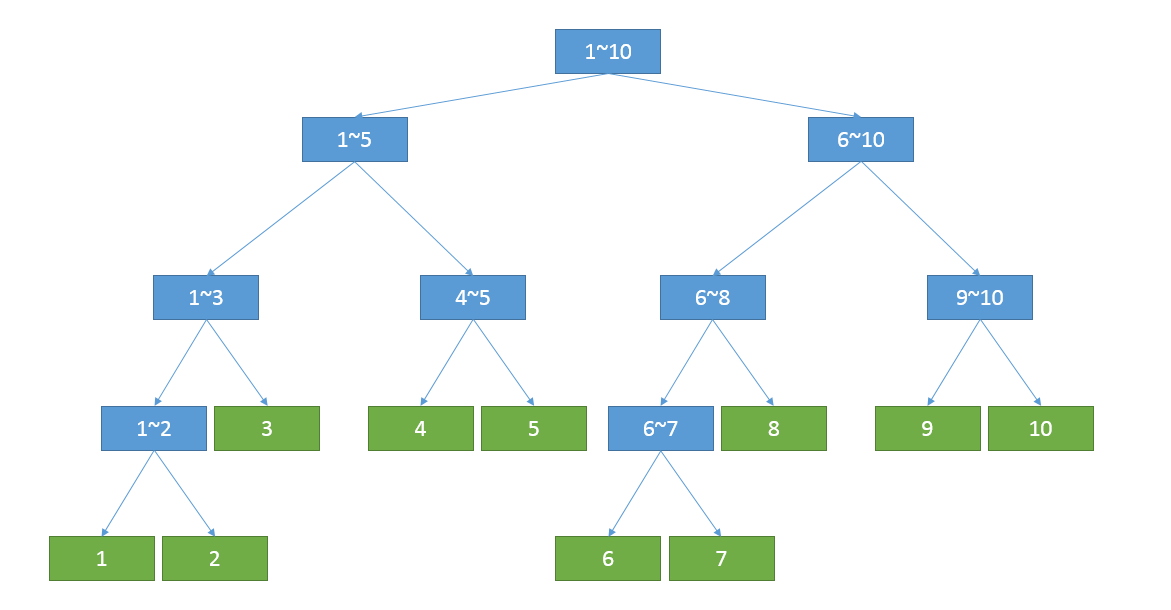1
2
3
4
5
6
7
8
9
10
11
12
13
14
15
16
17
18
19
20
21
22
23
24
25
26
27
28
29
30
31
32
33
34
35
36
37
38
39
40
41
42
43
44
45
46
47
48
49
50
51
52
53
54
55
56
57
58
59
60
61
62
63
64
65
66
67
68
69
70
71
72
73
74
75
76
77
78
79
80
81
82
83
84
85
86
87
88
89
90
91
92
93
94
95
96
97
98
99
100
101
102
103
104
105
106
107
108
109
110
111
112
113
114
115
116
117
118
119
120
121
122
123
124
125
126
127
128
129
130
131
132
133
134
135
136
137
138
139
140
141
142
143
144
145
146
147
148
149
150
151
152
153
154
155
156
157
158
159
160
161
162
163
164
165
166
167
168
169
170
171
172
173
174
175
176
177
178
179
|
class SegmentTree {
class Node {
int left, right;
boolean cover;
int count;
Node leftChild, rightChild;
Node(int left, int right) {
this.left = left;
this.right = right;
this.count = 0;
this.cover = false;
}
}
Node root;
void build(int left, int right) {
root = new Node(left, right);
build(root);
}
void build(Node root) {
int left = root.left;
int right = root.right;
if (right - left == 1) {
return;
} else if (right - left > 1) {
int mid = (left + right) >> 1;
Node leftNode = new Node(left, mid);
Node rightNode = new Node(mid, right);
root.leftChild = leftNode;
root.rightChild = rightNode;
build(leftNode);
build(rightNode);
}
}
void insert(int left, int right) {
insert(left, right, root);
}
void insert(int left, int right, Node node) {
if (node == null || left < node.left || right > node.right) {
System.out.println("输入的参数不合法!" + "left:" + left + " " + "right:" + right);
System.out.println("root:" + node.left + " " + node.right);
return;
}
if (node.left == left && node.right == right) {
node.count++;
node.cover = true;
return;
}
int mid = (node.left + node.right) >> 1;
if (right <= mid) {
insert(left, right, node.leftChild);
} else if (left >= mid) {
insert(left, right, node.rightChild);
} else {
insert(left, mid, node.leftChild);
insert(mid, right, node.rightChild);
}
}
void delete(int left, int right) {
delete(left, right, root);
}
void delete(int left, int right, Node node) {
if (node == null || left < node.left || right > node.right) {
System.out.println("输入的参数不合法!");
return;
}
if (left == node.left && right == node.right) {
node.count--;
if (node.count == 0) {
node.cover = false;
}
return;
}
int mid = (node.left + node.right) >> 1;
if (right <= mid) {
delete(left, right, node.leftChild);
} else if (left >= mid) {
delete(left, right, node.rightChild);
} else {
delete(left, mid, node.leftChild);
delete(mid, right, node.rightChild);
}
}
void preOrder() {
preOrder(root);
}
void preOrder(Node root) {
if (root.right - root.left == 1) {
System.out.println("[" + root.left + "," + root.right + "]:" + root.count);
return;
} else if (root.right - root.left > 1) {
System.out.println("[" + root.left + "," + root.right + "]:" + root.count);
preOrder(root.leftChild);
preOrder(root.rightChild);
}
}
int count() {
return count(root);
}
int count(Node node) {
if (node.cover == true) {
return node.right - node.left;
} else {
if (node.right - node.left == 1) {
return 0;
} else {
return count(node.leftChild) + count(node.rightChild);
}
}
}
}
|


